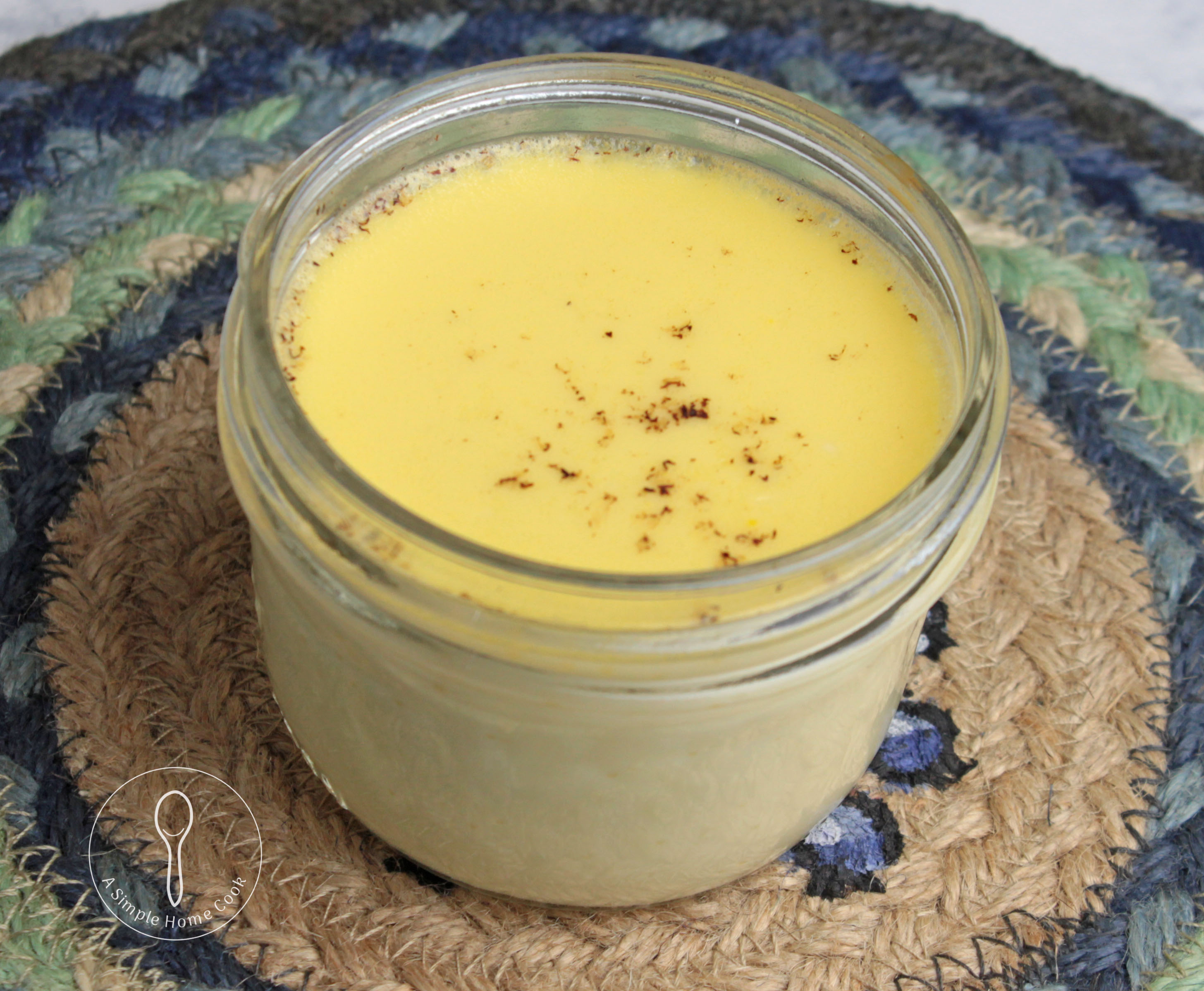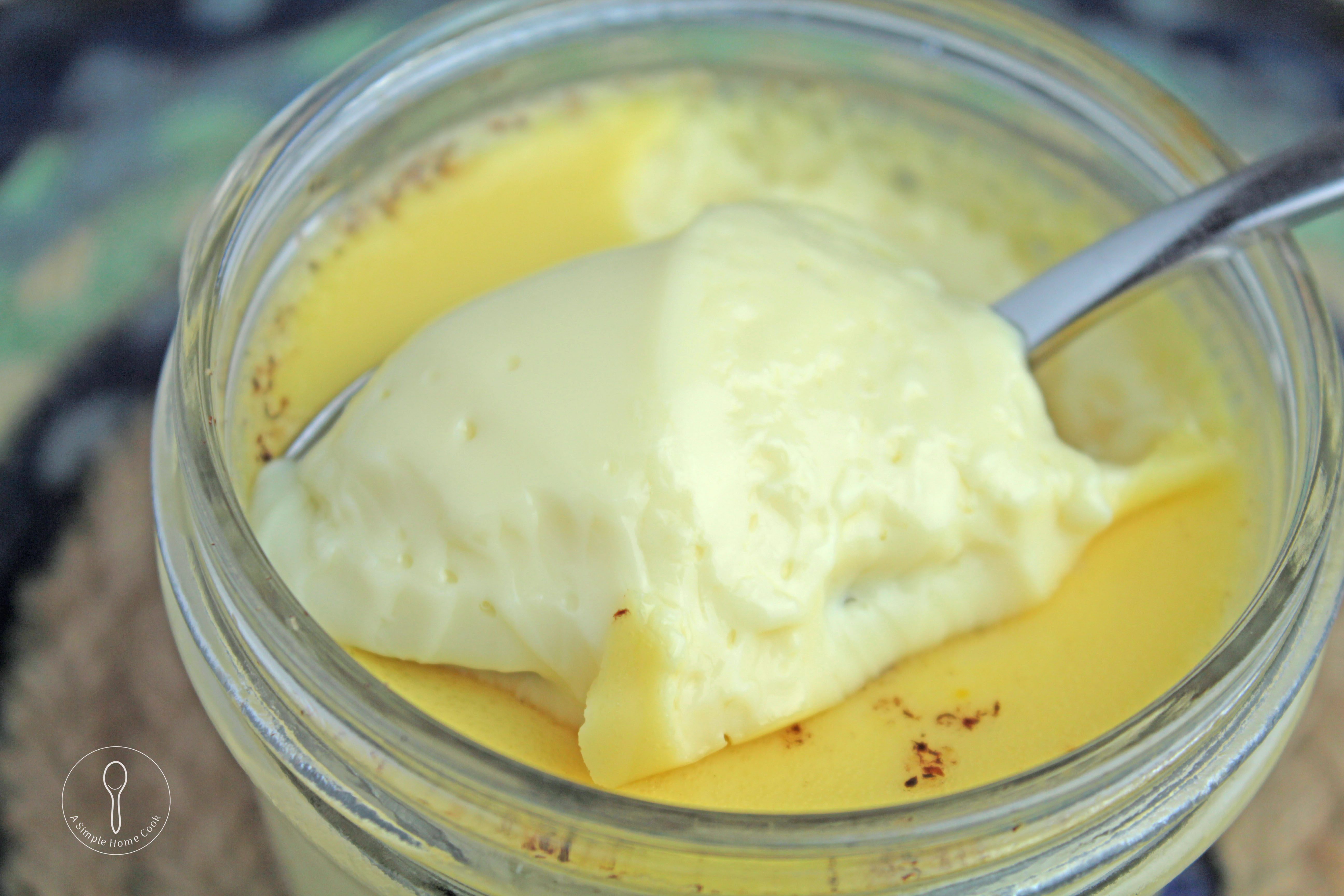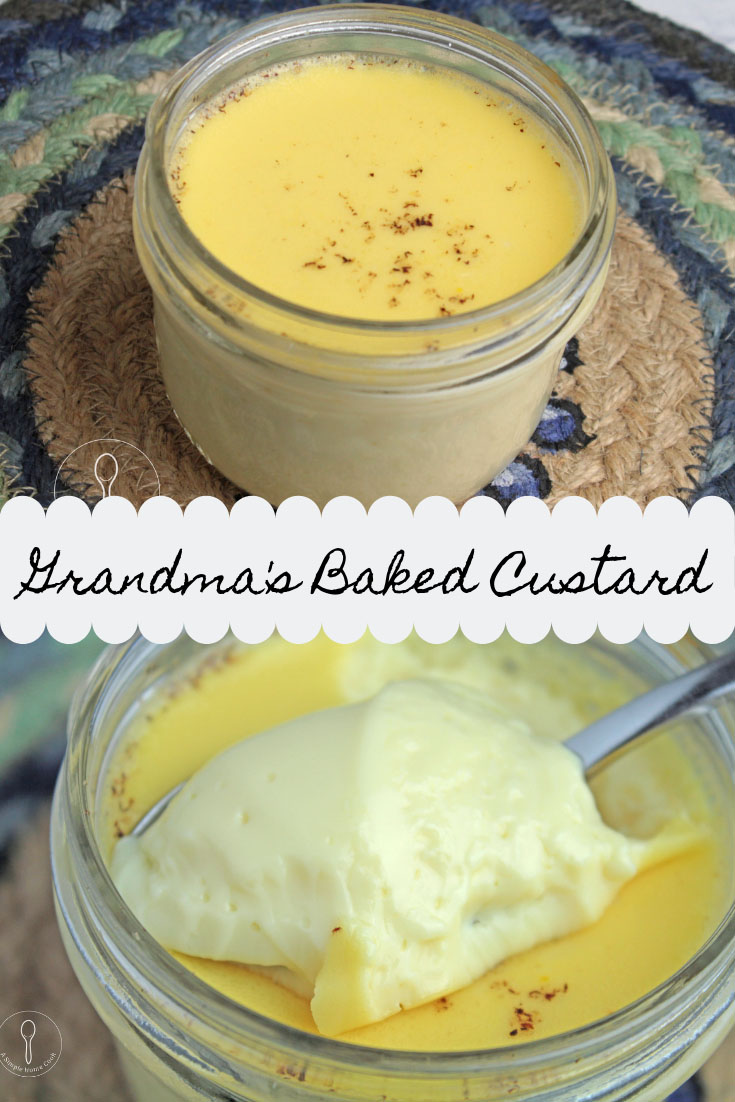Grandma’s baked custard was one of my favorite foods in childhood. My favorite baked custard was actually a pie, my grandma’s peach custard pie. However, I also loved her plain baked custard as well.
Today, I still love baked custard. It is now a favorite comfort food, especially if I am not feeling up to par. Although I usually stick to the traditional vanilla or mix it up a little with vanilla-butternut, I also like other flavors such as coffee and maple.
Despite not owning any custard cups as my grandmother did, I still manage to bake a custard that is very close to what she made. As I mentioned before, my grandmother did not like to write down recipes, so I had to go by a really old cookbook and my childhood memories. It is actually one of the dishes (along with peach custard pie) that Grandma taught my 9 or 10-year-old self to make.
The best thing about making a baked custard, besides getting to eat it, is that it is easy. To me, it is even easier than making a stovetop cooked custard from scratch.
I have heard people say that it is easy for a baked custard to go wrong, but I have not had that experience. I do believe most issues are caused by one or more of three elements of this still rather forgiving dessert: temperature, eggs, and overbaking.
Some issues are caused by most recipes call for scaling the milk before adding it to the eggs. To avoid an issue if you scald all the milk before adding it is to temper the eggs and then very gradually add the milk. (I use my own variation of this).
There is a reason to heat the milk, but it is no longer to help it be safer to consume as it was when many old recipes were written. If you are using a real vanilla bean, citrus peel, or other spices like star anise or cinnamon, the heated milk helps bring out their flavors. The heated milk also really assures that the sugar will be thoroughly dissolved. (Full disclosure: I have never had an issue with it when I did not warm any of the milk). Finally, heating the milk also helps if you failed to set it out early enough to bring it to room temperature.
Just like the milk, the eggs seem to do best when they are not refrigerator cold. You can set them in a bowl of warm water for a few minutes if you fail to get them out in time to bring them gradually to room temperature. The eggs need to be tempered prior to adding in hot milk. To temper the eggs, you add some of the beaten eggs to a small bowl and slowly add some of the milk while rapidly stirring the eggs. Then, gradually stir in that egg-milk mixture into the larger bowl with eggs. Add the remaining warmed milk to the eggs very slowly while stirring constantly.
Even after the eggs are fully incorporated into the custard mix, the egg whites usually have a not-so-smooth/tough element to them that is unwanted in the silky-smooth texture of an ideal custard. Simply straining the custard mixture removes most, if not all, of this undesirable element.
The silky-smooth custard texture can also be ruined if the custard is too overbaked. The custard needs to have jiggle to it when it is removed from the oven. It will continue to cook after it is taken out of the water-bath even. If it really overcooks, the custard gets clumpy and watery.
Grandma’s Baked Custard
Ingredients
- 5 large eggs, at room temperature
- 3 1/2 c. whole milk or half-and-half
- 1/2 c. sugar
- 1/2 tsp. salt
- 1 tsp. vanilla extract*
- nutmeg (optional)
Instructions
- Preheat oven to 350 degrees F.
- Whisk eggs in a large bowl until well blended.**
- Stir in 2 c. of milk.
- Heat the other 1 1/2 c. of milk on the stove top or microwave until very warm/hot, but not boiling hot. (You can scald it and let it cool some if you prefer).
- Add extract to milk.
- Slowly pour heated milk into the egg and milk mixture, whisking continuously.**
- Stir in sugar and salt until sugar is dissolved.
- Strain the mixture through a fine strainer or sieve into a pitcher or large measuring cup to make pouring into the containers easier.
- Line a baking or roasting pan with a kitchen towel to keep the custard cups from sliding and place eight 6 oz.ramekins or custard cups or 8 oz. wide-mouth mason jars on the towel.
- Fill each jar with custard mixture; be sure to distribute evenly.
- Top each custard with grated or ground nutmeg, if desired.
- Place baking pan in oven.
- Carefully pour near boiling water into the roasting/baking pan until the water is at least half-way up the sides of the ramekins/jars but not more than 1/2 i-inch from the top of them. It is EXTREMELY important to keep the water out of the custard.
- Lower the oven temperature to 325 degrees F.
- Bake until the custard is jiggly and a sharp knife inserted in the center comes out clean or nearly clean, usually about 40 to 50 minutes. DO NOT OVER BAKE.
- Carefully remove custards from the water bath. They will continue to cook some after they are removed from the oven, especially while they are in the water bath. It should firm up more as it cools.
- Leave on a cooling rack until ready to serve warm or cool enough to be refrigerated. For food safety this should be withing a couple of hours and no longer than 4 hours.
- Can be served warm or cold.
- Keeps well stored covered in the refrigerator. (Unlike stove top custards, you do not need to put plastic wrap or wax paper on the surface of the baked custard to store it).
Notes
* Other flavorings can be used like vanilla butternut, maple, almond, coffee, etc.
Spice, including vanilla bean, tea leaves/bags, or citrus peel can be added to the milk while heating it to flavor the custard as well.
**Try to not beat the eggs too vigorously to avoid a lot of froth or bubbles. The bubbles can make pitted top on the baked custard.
^It is easier and safer for me to use canning jar lifter to take the custards out of the water bath. Hence, wide-mouth 8 oz. canning jars work well for me.





